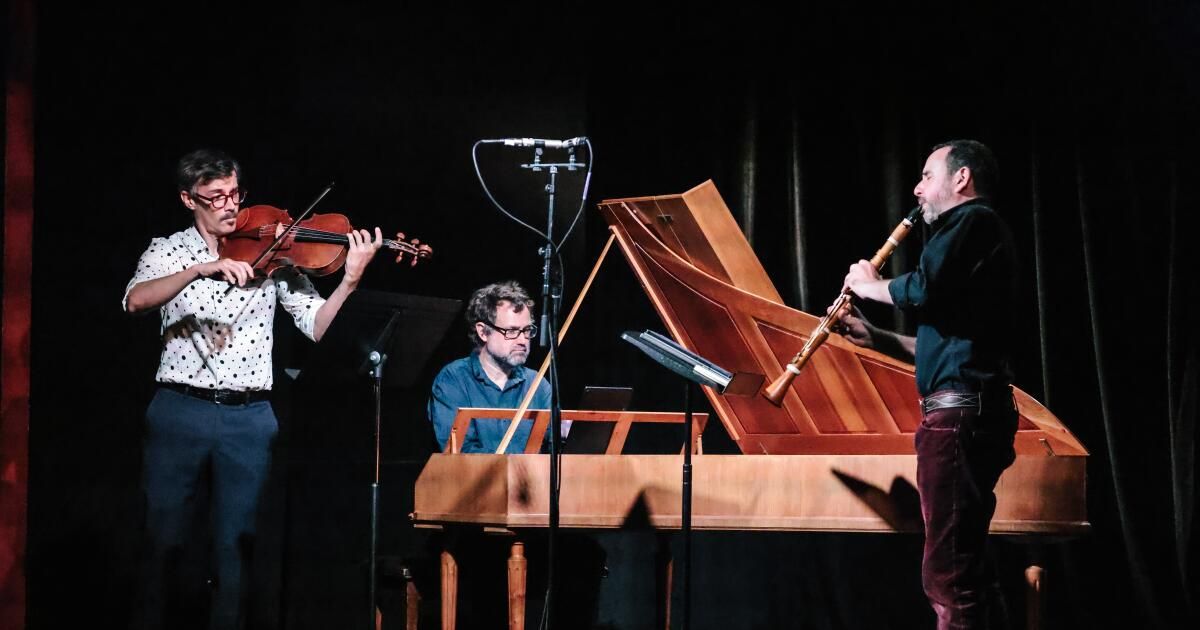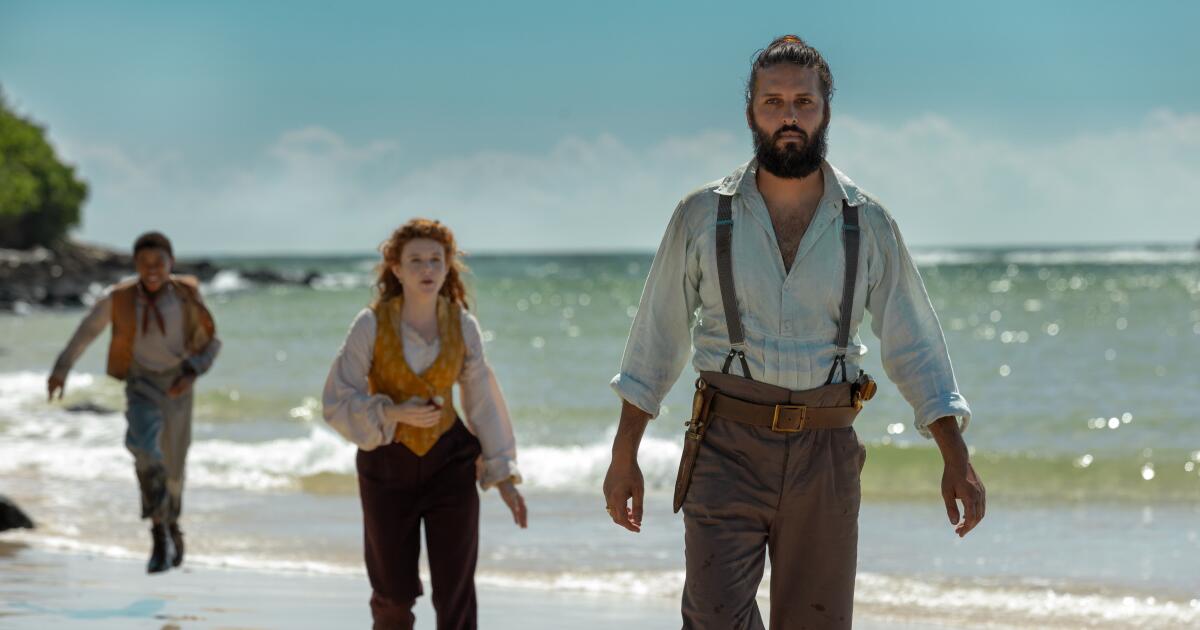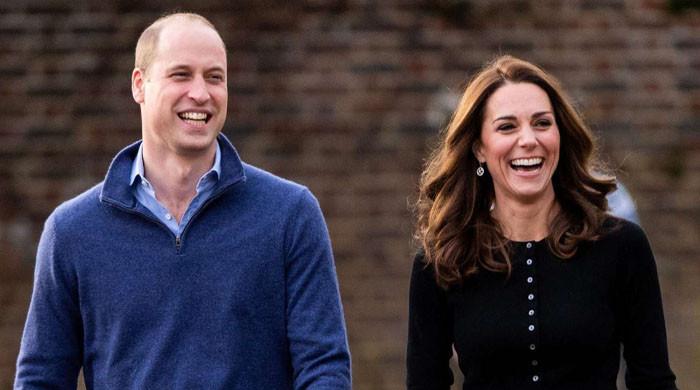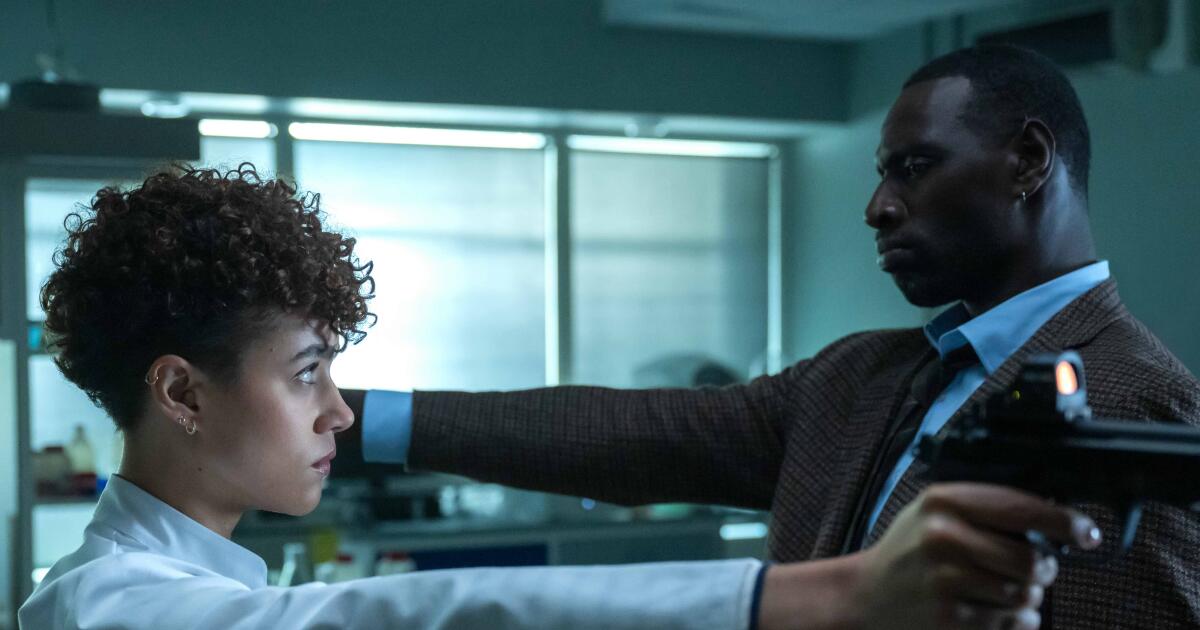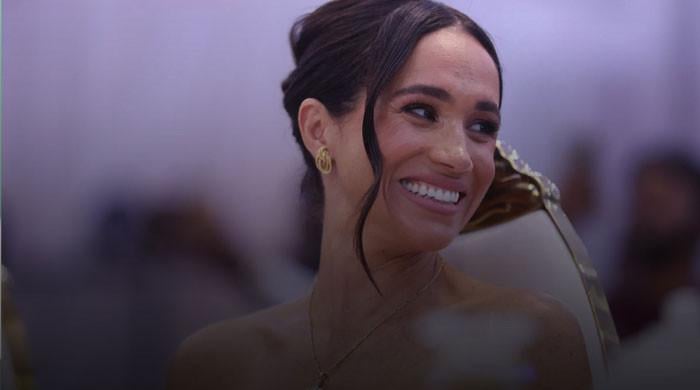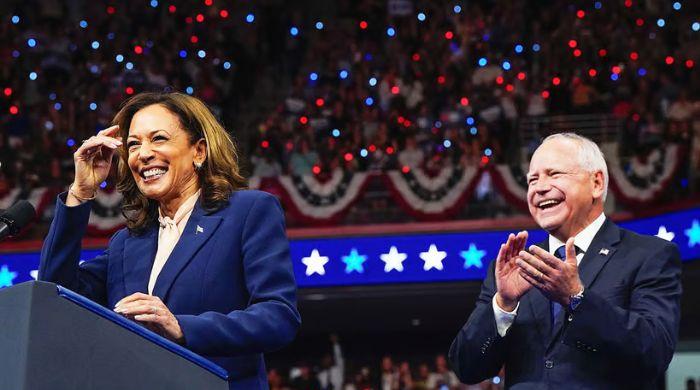Summer is the season when chamber music, the most intimate musical genre, meets nature. At festivals in the United States, you can find music venues at the sea (La Jolla SummerFest), in the desert (Santa Fe Chamber Music Festival), in the mountains of Montana (Tippet Rise Art Center) and in green Vermont (Marlboro Music Festival).
Los Angeles thinks otherwise. We are a city with a remarkable chamber music history, having produced a wealth of string quartets and other ensembles, but like so many things in Los Angeles, our chamber music tends to be where you least expect it.
Last weekend, the event took place in two very different historic venues, built over a century ago, and playing very different music. But they had one thing in common: a connection to Hollywood, both near and far.
At the Doheny Mansion — the 1899 French Gothic-Moorish home of oil magnate Edward L. Doheny in Los Angeles’s University Park neighborhood — the New Hollywood String Quartet presented its annual four-day chamber music festival, this year dedicated to Czech composers. On Saturday afternoon, there was a sumptuous performance of Dvorák, Smetana and Martinu under the Tiffany glass dome in the Gilded Age splendor of the Pompeiana Hall, with complimentary champagne included.
On Sunday afternoon at the Sierra Madre Playhouse, built in 1910, Tesserae Baroque presented a program suited to 17th-century instruments, a resonant modern baritone saxophone and a modern clarinet that neighed like a Persian ney.
A postcard, postmarked 1908, shows oil magnate Edward L. Doheny's mansion in one of Los Angeles' first gated communities.
(Patt Morrison/Los Angeles Times)
And what does Hollywood have to do with all this?
For starters, the New Hollywood String Quartet is inspired by the famous Hollywood String Quartet, which was formed by studio musicians in the 1940s and 1950s. It was reputed to be America's finest string quartet for its incredibly smooth sound and ability to create intense drama. Its unfailingly sublime recordings of Schubert and its penetrating late Beethoven recordings remind us that the golden age of film scores is in no small part due to these studio musicians.
That remains true of New Hollywood, which formed in 2001, four decades after the original Hollywood quartet disbanded. It's a little hard to find their names in the tiny-print credits, but they appear in dozens of movies you've seen.
They are also found in the city. Andrew Shulman is the principal cellist of the Los Angeles Chamber Orchestra, and first violinist Tereza Stanislav is the second violinist of the Calder Quartet. Violinist Rafael Rishik and violist Robert Brophy are the other versatile and well-traveled members.
Saturday’s program, which began with Shulman’s spirited performance of Martinu’s 1939 First Cello Sonata, written in Paris as war broke out, ended with Smetana’s autobiographical First String Quartet, “From My Life.” Written in 1876, “From My Life” is perhaps the first proto-Hollywood chamber music score, dramatizing Smetana’s onslaught of deafness, with flashbacks to youthful games and lovemaking. New Hollywood gave it a fleshy immediacy that, in the vibrant space, was overwhelming.
(Yes, the quartet did find their way onto the big screen, in the eerily prescient 1992 heist film “Sneakers,” starring Robert Redford.)
A mile away at USC (where Doheny donated the funds to build the campus’s beautiful library), the School of Music faculty once included such notables as violinist Eudice Shapiro, who dominated the violin department for half a century when she wasn’t working as the first female concertmaster of a film studio orchestra at RKO and Paramount or rubbing shoulders with Stravinsky. She was one of the composer’s favorite violinists.
But the violinist Stravinsky relied on most in Los Angeles was Sol Babitz, who played with the Los Angeles Philharmonic in the 1930s and with the 20th Century Fox studio orchestra in the 1940s. In the 1950s, she introduced all kinds of modern music to Los Angeles at the Monday Night Concerts and the Ojai Music Festival. Babitz was also, to Stravinsky's interest, a pioneer in the practice of early music performance, bringing Los Angeles into the international spotlight by experimenting with period instruments with her Early Music Laboratory. It should come as no surprise that, growing up in this kind of home, her daughter, the writer Eve Babitz, captured Los Angeles with unparalleled verve.
It would be fascinating to know what Stravinsky (who gave 13-year-old Eve Babitz her first glass of Scotch) would have made of “Bowling, Animals, and the Ocean,” the title of the Tesserae Baroque program put together by violinist and violist Andrew McIntosh. McIntosh is a new-generation Babitz and then some. Baroque specialist is a sideline for the violinist and violist, who is also a member of the ultra-progressive chamber orchestra Wild Up and the composer of the opera “Bonnie and Clyde.”
In Sierra Madre, McIntosh was joined by two members of Tesserae, Ian Pritchard on a fortepiano and Joshua Rubin, who played historic and modern clarinets. Rubin, like McIntosh, is also a member of an all-star new music ensemble, the International Contemporary Ensemble in New York. Along with two movements from a Bach violin sonata by CPE and Mozart’s Clarinet Trio (“Kegelstatt”), Rubin was featured in four recent short works centered on the clarinet.
The case of a century-old movie theater in Sierra Madre is another story. The building, which was originally a furniture store, was converted into a silent movie theater in 1924. Over time, it was reduced to a 99-seat theater, although it continued to show films. After the pandemic, it became a small performing arts center. Its new artistic director is Matt Cook, a prominent Los Angeles percussionist who is also a member of Wild Up.
The programming is ambitious, with plans for new music (Wild Up moves to a series next season), early music, world music, jazz, pop, dance, theater, silent film (with live music) and more.
If the Tesserae program is any indication, the quiet Sierra Madre may not be quiet anymore. The acoustics are ideal. Parking is free and easy in the center of a small town with a variety of restaurants. The mountains may be an invitation to a cooler day.

Marta Tiesenga, left, and Andrew McIntosh in Michael Finnissy’s “Yso.”
(Dania Maxwell / Los Angeles Times)
But above all, Sunday offered a gripping exploration of what instruments can do when boundaries are expanded, what composers can do when genres are expanded, and what virtuosos can do when techniques are expanded. The gut-string sound of McIntosh’s violin, played without vibrato, for example, had the flourish that Stravinsky so enjoyed in the Bach sonata. The theater mood suited Mozart’s operatic trio, as it did especially with the oddities of Rubin’s clarinet.
Nina Barzegar’s “Emancipation Pondering” pondered what it would be like if the clarinet could ululate and howl like the Persian ney (it can, and did so boldly). McIntosh’s “Uncertainty and Discreteness” offered a solo bass clarinet the certainty of sounding submerged. For Michael Finnissy’s “Yso,” Rubin, McIntosh, Pritchard and guest saxophonist Marta Tiesenga were tasked with making an improvised piece limited to 100 notes interesting. Rubin and Tiesenga also theatrically paired bass clarinet and baritone sax, two similar but different pieces.
On the way out, the chairman of the board charmingly handed out jars of local jam to anyone who made a $20 donation to the theater. I had a $20 bill in my wallet and felt very rewarded in more ways than one.

